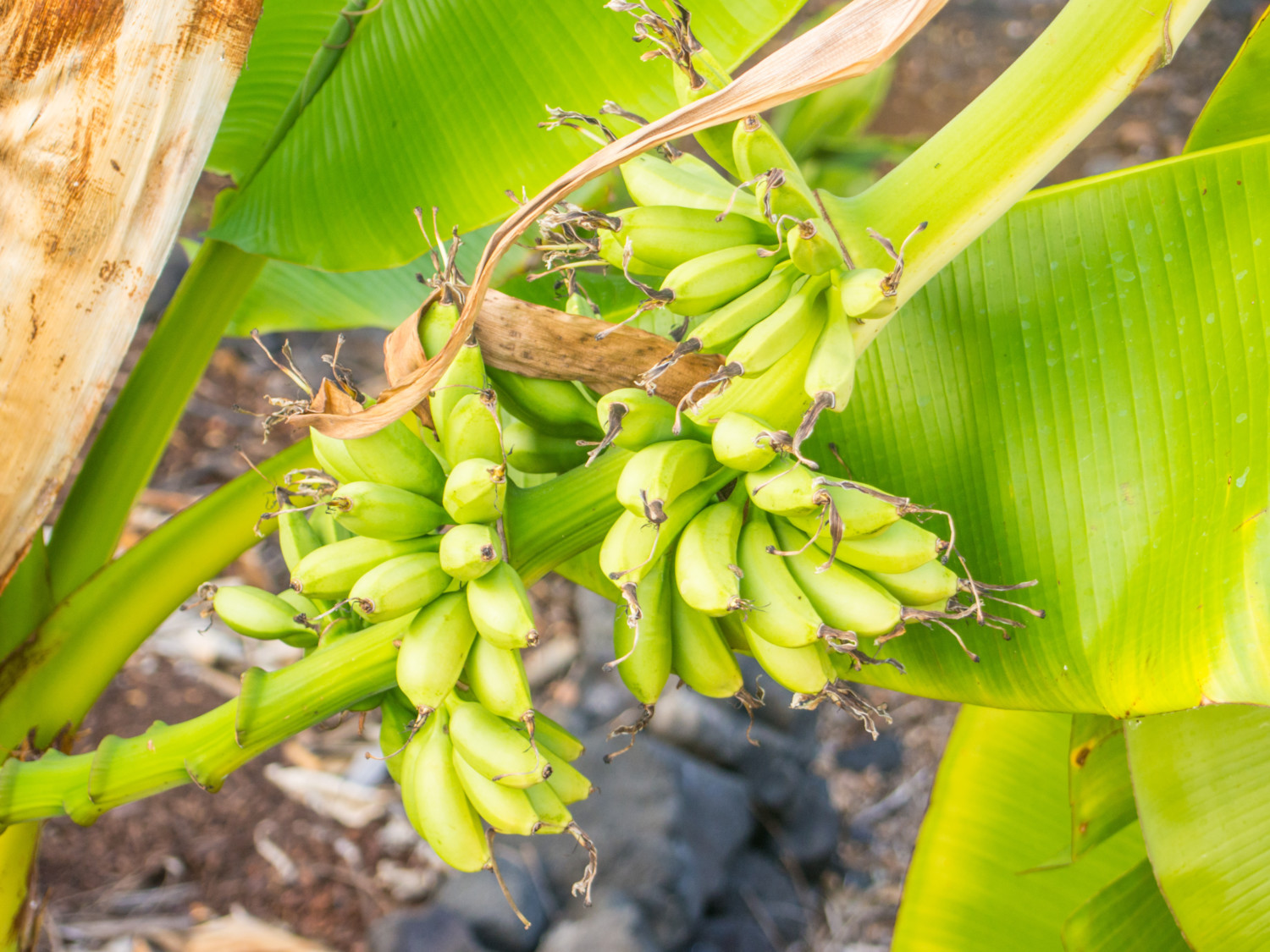Blue java bananas, sometimes also called ice cream bananas because their texture reminds some people of vanilla ice cream, are a creamy banana variety you might not have tried before.
The blue java variety isn’t as blue as some manipulated images that have made the rounds on social media might make it out to be. They don’t have a bright blue skin and light blue flesh — the real blue java varietal is a deep green with a blue-silver undertone when unripened and turns yellow when ready to eat. Part of the bluish tinge comes from the waxy and protective coating on the banana’s skin.
You can see both a photoshopped version (on top) and the real blue-green hue of the fruit when unripe (bottom) in a tweet from Rustling Trees organic grocery store.
The unripe blue Java banana is blue and green. Turns yellow when ripe pic.twitter.com/KDGlDFrdNI
— RustlingTrees (@RustlingTrees) October 17, 2021
Blue java bananas are also known as the Ney Mannan, Krie, Cenizo or Hawaiian banana, depending on where you are (though they’re not called this in Hawaii, ironically). The variety comes from Southeast Asia originally and is a cross between the Musa balbisiana and Musa acuminate banana species, reflected in its Latin name: Musa acuminata × balbisiana.
Weird Explorer has a great video explainer of Blue Java bananas from reviewer Jared Rydelek.
Rydelek doesn’t think the banana tastes like ice cream but does find it “delicious.” He says the texture of the banana is soft, dense, and creamy, but tastes more like berries to him.
This ice cream banana also does well in slightly colder climates than many banana varieties. So even if you don’t live in Hawaii or Florida, you might have luck growing your own plant in non-tropical zones if you can find a starter and give it some help. U.S. growing zones 8-11 may find they can grow blue javas well.
One commenter on Weird Explorer’s blue java banana video wrote that she’s successfully grown the variety inside in Oregon and been experimenting with growing it outdoors in mulched ground.
“Like most other bananas, they grow best in continuously moist but not wet soils,” wrote the Hawaii Horticulture blog. “They can tolerate a few dry months but if rain doesn’t fall in decent amounts for more than three months where you live, they will need some added irrigation.”

Blue java banana plants can grow up to 15 or 20 feet tall and do need space to get to full size. According to Epic Gardening, it could be between a year and two years before your blue java banana plant actually produces fruit.
I’m from Hawaii, and one of the best bananas I’ve ever had that is also very common here is a sweet-tart flavored “apple banana.” Some have said blue java bananas taste similar to apple bananas. While I haven’t had blue javas before, apple bananas satisfy my sweet tooth and are much more tangy-sweet than most bananas you’d find in a grocery store.
While blue java bananas and apple bananas are closer to the size of plantains, they are not comparable in taste. Plantains have a blander, starchier taste.
These blue java ice cream bananas, though, would be great in desserts and smoothies.
Would you try growing a blue java banana plant?
This story originally appeared on Simplemost. Checkout Simplemost for additional stories.


